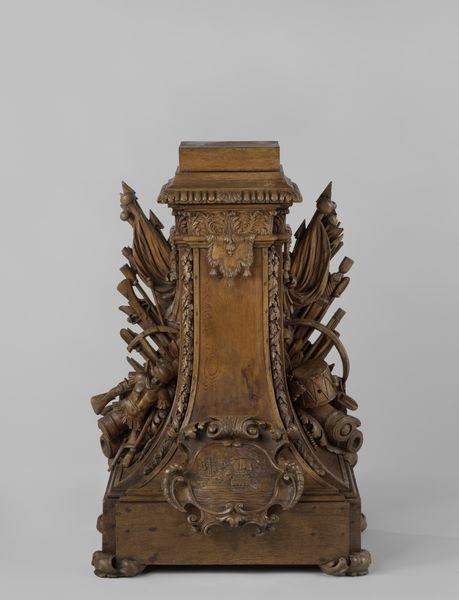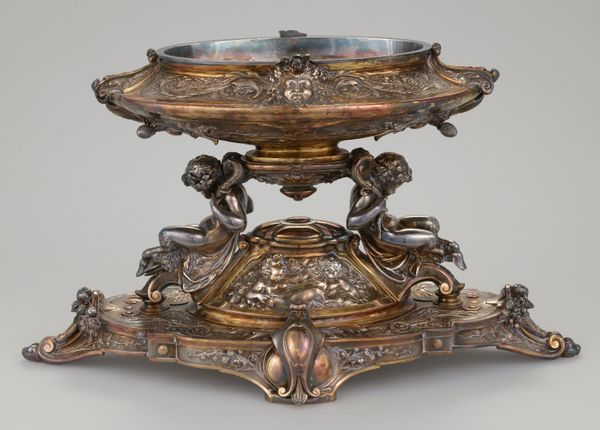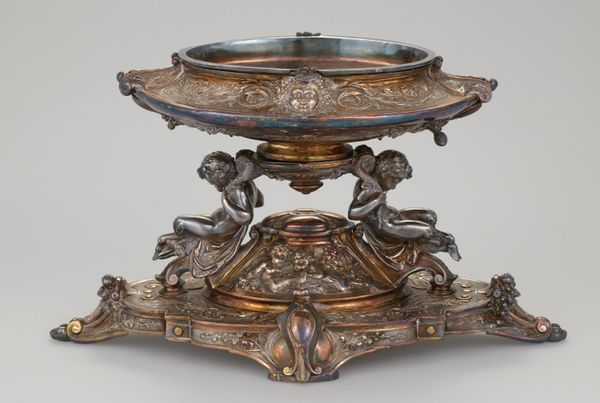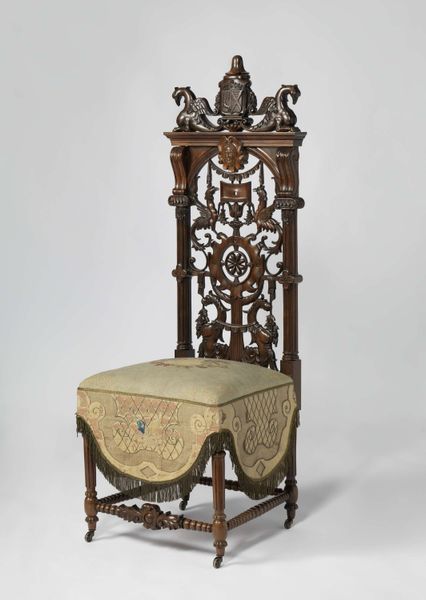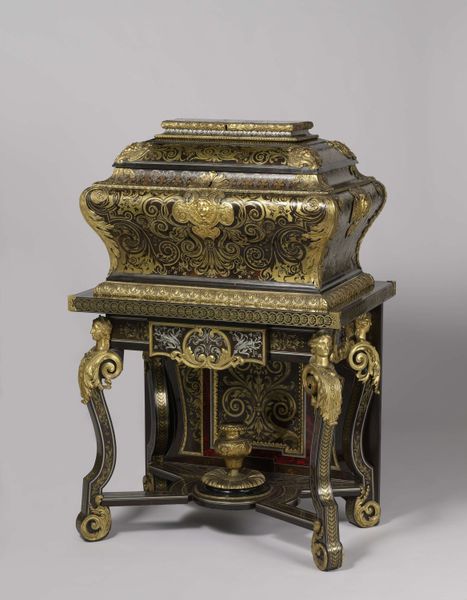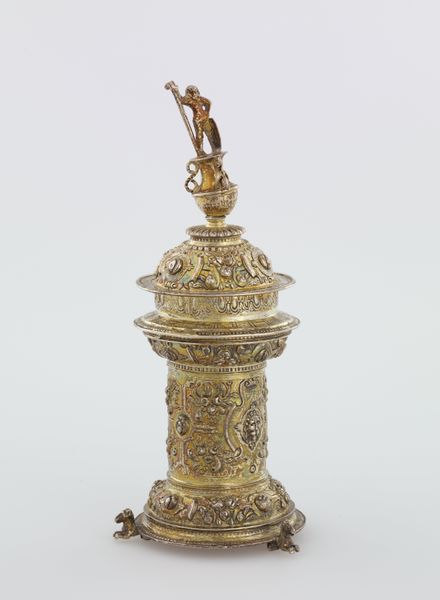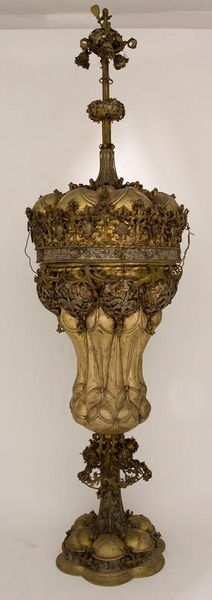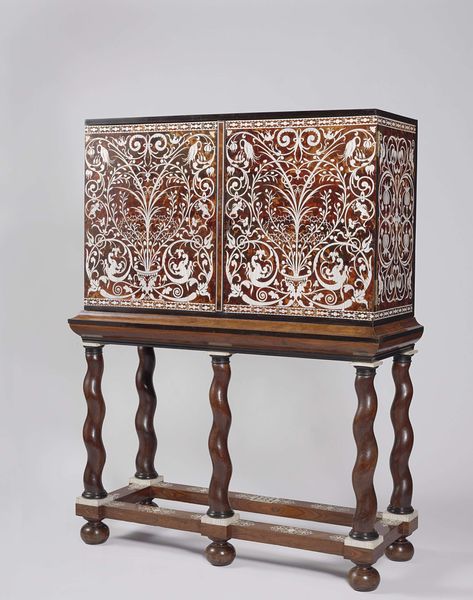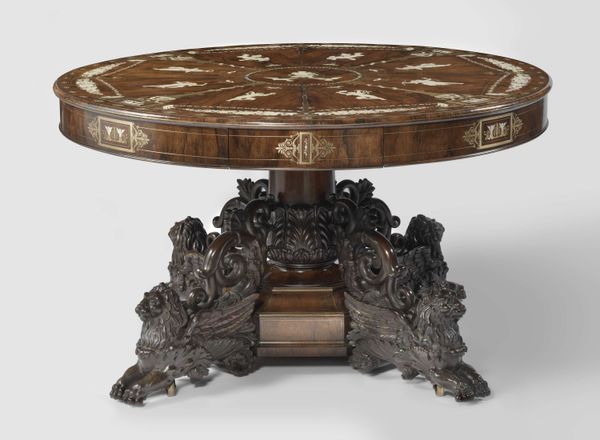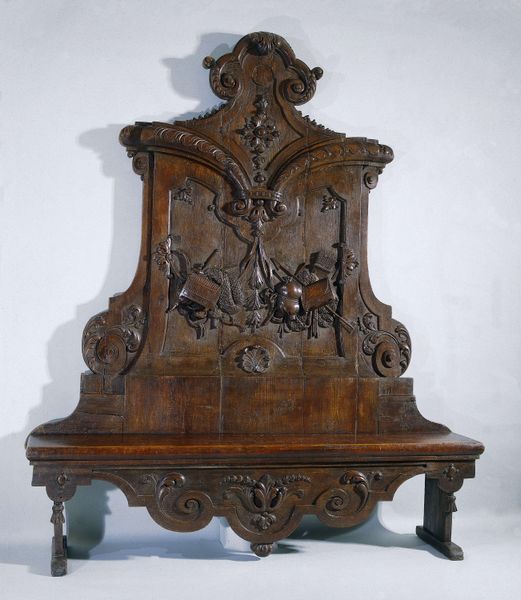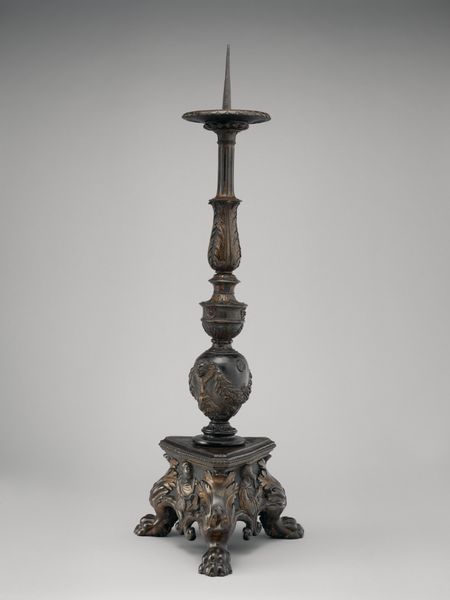
carving, sculpture, wood
#
carving
#
sculpture
#
furniture
#
sculptural image
#
traditional architecture
#
sculpture
#
wood
Dimensions: H. 98.7 cm, W. 49 cm, D. 39.4 cm
Copyright: Public Domain
Editor: So, this intricately carved "Side chair" – or *sgabello a dorsale* – by Alois Überacher, dates to somewhere between 1871 and 1900. It’s currently held at the Metropolitan Museum of Art. All that carving really struck me… How would you interpret a piece like this? Curator: I see an object steeped in visual memory. Think of the weight of history contained within those carved figures, the almost obsessive detail... It reminds me of a vernacular adaptation of classicizing forms during a period of burgeoning nationalism in Europe. Do you notice how it evokes a past – an imagined, romantic past, of course? Editor: That's a really interesting idea, this link to nationalism! Now that you mention it, there is an old world feel to the piece. Why do you call the past "romanticized"? Curator: Well, this kind of historical revivalism often involved cherry-picking elements from earlier eras to create a sense of continuity and cultural identity, conveniently forgetting the less appealing bits. And consider those figures flanking the chair back. They echo classical caryatids, figures representing virtues, ideals, even gods…what cultural values might these symbols have been meant to convey, do you think? Editor: I hadn't considered their symbolic role, but they almost give off a sense of...pride? Maybe even power, in their support of the overall structure. Curator: Precisely. Every element – the material, the form, the very act of meticulous carving – contributes to a complex narrative about tradition, artistry, and perhaps, aspiration. Editor: I never would have considered how much history could be contained in just one chair. Curator: Exactly! Objects often operate as silent carriers of cultural memory, allowing us to reflect on values of identity, artistry, and historical connection.
Comments
No comments
Be the first to comment and join the conversation on the ultimate creative platform.
